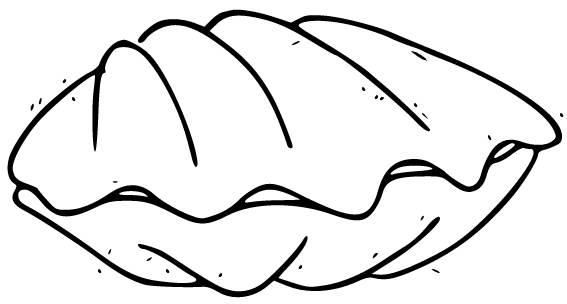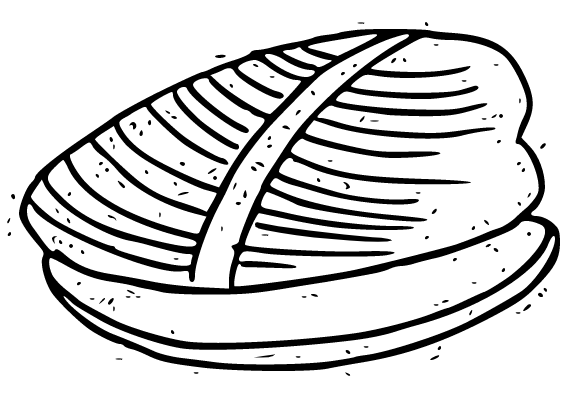-

-
The Discerning Mollusk's Guide to Arts & Ideas
-


met Didem Erbaş last October at Simbart Projects in Istanbul. The venue is located on the first floor of an apartment building in the old district of Çukurcuma’s most familiar road, populated on both sides with antique shops.
The exhibition’s enigmatic title Where the Green Ants Dream is taken from a Werner Herzog film, and the show comprises brand-new works inspired by the movie along with a careful selection of pieces the artist executed during the pandemic.
Having watched the film a few days earlier, its after-effects still lingering in my mind, as I enter the venue, the first detail that immediately catches my attention are the small ant hills Erbaş has created in paper mâché.
“As my work centers around migration and displacement, I was led to Herzog’s movie,” Erbaş reveals.
Where the Green Ants Dream (1984) is set in a remote location in Australia’s outback. In the film, the Aborigines residing there superstitiously believe that green ants dream underneath this ancestral land, and if they are ever woken up from their deep slumber, the world will come to an end. When a large corporation searching for uranium begins to drill the earth, they endeavor to prevent this from happening. In response, corporate officials step in to discourage them. When that doesn’t work, they try to remove the Aborigines from the area.
At the entrance of the venue is the first piece the artist has executed after watching the film, an installation titled Constructing a Field.

[Didem Erbaş, Constructing a Field, 2022, aluminum, plastic, pulp, silicone, ceramic, wood, screen, metal, porcelain tile, soap, brass wire, polyurethane foam, 74 x 94 x 274 cm, courtesy of Simbart Projects, Istanbul.]
Erbaş explains how she sketched out its flat, wooden base with the intention of creating “a map of anywhere, as seen from a plane,” but adds, wearing an accepting smile, how some visitors have likened its unusual shape to a whale.
On the flat structure directly placed over the floor is an eye-catching arrangement of small paper mâché sculptures and found materials and objects. Amongst the handmade abstract forms and ant hills (all painted in mute tones), I spot a blue anti-slip vinyl floor covering, a pipe dipped in canary yellow, pool tiles coated in other primary colors and an Ipad with a smashed screen.
“It was similar to creating an abstract painting—the color’s juxtaposition is a reference to the foundation of painting,” the artist elucidates.
A tendency towards abstraction commonly features in her practice. She explains how she gradually gravitated towards it:
“At the beginning I used to do figures. After a while their faces began to disappear, then their bodies. It’s about wanting to see less, about simplifying things.”
Listening to her, I recall one of her earliest works, her Pogrom Series (2013); paintings referencing the events of 6–7 September 1955, when Istanbul’s Greek minority was violently targeted by state-led mobs, resulting in their exodus from Turkey. In each painting, faces and figures have become less and less distinguishable, while the turbulence of the historic event is evoked through unconstrained, abstract gestures.
Erbaş is quick to highlight how, since her approach is primarily governed by conceptual concerns, abstraction is not always an ultimate destination.

[Didem Erbaş, No Celebration (Pogrom series), 2013, oil on canvas, 25 x 35cm, courtesy of the artist.]
Behind Constructing a Field, a bit further along on the wall are a series of five desert landscapes. They have been created from screenshots taken from a scene in the movie, filmed from a moving vehicle. Each small-scale oil-on-canvas is paired with a charcoal drawing Erbaş executed during the pandemic.
“I wanted this section to progress like a film strip” the artist points out, as we get closer to the lined-up works.
The paintings, with their restricted color range—off-white for the sky and tones of beige and brown for the land—each demonstrate various stages of descent into abstraction. In some areas, paint has been applied thinly, the visibleness of the canvas’ texture a part of the play on surfaces.

[Where the Green Ants Dream, installation shot, Simbart Projects, Istanbul.]
In the first, a relatively generic desert scene centers around a sand dune, while in another, if the title Cloud of Dust wasn’t a giveaway, the vigorously applied brushstrokes dominating the composition evoke a fire or an explosion, as well as sheer abstraction. Yet the white rectangle in the foreground draws one’s eye to a present land and sky—a piece of debris floating in a humanless landscape, a theme also explored in other paintings in the series.

[Didem Erbaş, Cloud of Dust, 2022, oil on canvas, 32 x 32 cm, courtesy of Simbart Projects, Istanbul.]
From a distance, the charcoal drawings appear like smokey-black squares.
“They are similar to maps or typography, with a bird’s eye-view of the area,” Erbaş points out.
As I get nearer, I detect individual dark lines for indented grounds and uncolored spots of white paper highlighting mountainous zones.
They are inspired by Erbaş’s frequent hikes around a village in Silivri—a coastal district in Istanbul Province—where her parents have a farm.
“They carry the trails and markings of the journeys I make whenever I visit my parents. There, I witness the four seasons and different harvests, such as sunflower, wheat and canola. We have dogs and chickens. Sometimes, when there has been flooding or frost, I’ve photographed the terrain and created drawings from that."

[Didem Erbaş, Shore, Bones, Sea I, 2021, handmade charcoal on handmade paper, 34.5 x 34.5 cm, courtesy of Simbart Projects, Istanbul.]
To save on expenses, the artist makes her own charcoal, by collecting vine or willow branches during her walks, then burning them inside an empty can.
“Acquiring new skills in the process is an important part of my practice,” she recognizes before telling me how, to create an installation, she took lessons in stained glass.
Erbaş often picks up old pipes and other discarded objects from the pile her parents have set aside in the farm. To save space in her small Istanbul studio, she often ends up reusing them.
“If you try to destroy or get rid of them, they will just return to the environment as waste. Besides, it’s always exciting to see the material in a new context,” she remarks, before pointing out that the aluminum pipe and silicone she has utilized in Constructing a Field were previously a part of another piece.
The artist finds war footage on YouTube—drone recordings used by mainstream Turkish TV channels covering conflict between the Kurdish militia and the Turkish army in the country’s Southeastern region, an area predominantly populated by the Kurdish minority. Although born and bred in Istanbul, the artist’s family are originally from Malatya, a city located also in Southeast Turkey.
“I definitely carry a certain sensitivity towards there, which reflects in my work,” the artist acknowledges.
Towards the end of our tour, we approach a painting hanging on one corner of the back wall. An unassuming oil on canvas: boxlike silhouettes in black scattered across shades of grey. Only after I’m told Grey Zone derives from such footage, I can recognize an overhead view of a building and vehicles.

[Didem Erbaş, Greyzone, 2021, oil on canvas, 37 x 32 cm, courtesy of Simbart Projects, Istanbul.]
At the other end of the same wall as Grey Zone, Green depicts a partial view of a plane—a work on paper the artist again made during the pandemic. A rendition of more drone imagery, its infrared night vision is portrayed in bright green ink.
“In the movie the corporate officials try bribing the Aborigines to leave by gifting them a green plane. In the end, the Aborigines lose the trial the company brings against them, yet they get to keep the plane. This exhibition ends with this picture. In a nuanced way, it brings together the plot of the movie and what’s happening in the geographic region we live in,” Erbaş concludes.

[Didem Erbaş, Green, 2021, ink on paper, 31 x 26 cm, courtesy of Simbart Projects, Istanbul.]
Didem Erbaş’s solo exhibition Where the Green Ants Dream was on display at Simbart Projects, Istanbul from 09.09. 2022 – 29.10.2022
Didem Erbaş is currently one of the participants of the Turkey Worshop (a residency programme supported by IKSV) at Cité Internationale des Arts, Paris, which runs until 27.09. 2023. There she will have an open studio showcasing her work from 13 September.
The artist is due to start a residency programme in May 2024 at SVA, New York (supported by the American Turkish Society).

Selin Tamtekin is a Turkish-British novelist and art writer based in London. She is a columnist for the Turkish news website T24. Her two novels published under the pseudonym Deniz Goran are The Turkish Diplomat’s Daughter (2007) and The Fugitive of Gezi Park (Ortac Press, 2023).